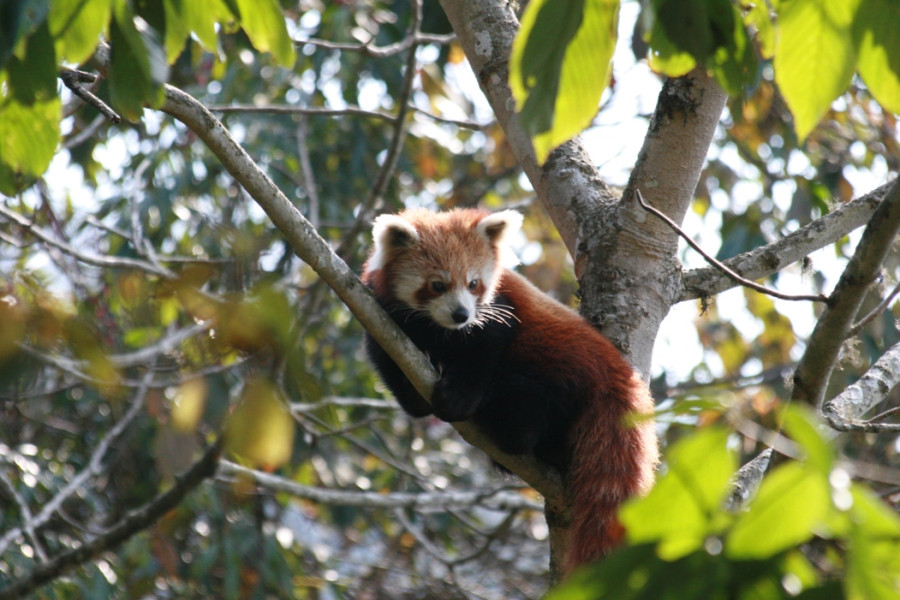Editorial
Do not disturb
The ban on human entry into the forests will help the red pandas breed and raise their cubs.
The decision by 14 community forests in Taplejung district to leave the forests to endangered red pandas temporarily is an important step towards making our ecology safe for wildlife. Having started in mid-July, the ban on human entry into the forests until mid-September is aimed at helping the red pandas breed and raise their cubs. Locally called habre, the red pandas are an extremely shy species, and they tend to shift their habitat at the slightest disturbance by external factors, not least human activities. The red pandas are especially vulnerable during the breeding season, which starts at the end of May and lasts until the end of July. As many as 86 percent of red panda cubs die young, making conservation an uphill battle.
Listed in the endangered category on the International Union for the Conservation of Nature’s (IUCN) Red List of Threatened Species, the global red panda population stands at a mere 10,000, while there are less than 1,000 of them in Nepal. Twenty-five percent of Nepal’s red pandas live in Taplejung, Panchthar and Ilam while the rest are spread over 23 districts. Protected under the National Parks and Wildlife Conservation Act, the already endangered species are under further anthropogenic threats including climate change, forest fires and human settlements in forests. According to a 2016 National Survey of Red Pandas in Nepal, the red panda habitat was divided into more than 400 small forest patches due to increasing human activities.
But the survival risks the red pandas face are not just limited to climatic and ecological factors. Red panda hides are often smuggled to the illegal animal trade market, raising the risk of a threat to their survival. There are ample instances of smugglers getting caught while smuggling red panda hides in the recent past. The risk of smuggling of the red pandas is so high that they top the list of contraband wildlife. And yet, the poaching and smuggling of the endangered species has not stopped, exposing how little Nepal has done towards enforcing its policy to protect endangered species. The fact that the government often exhausts much of its resources towards conservation and surveilling of large animals like tigers and rhinos means that the criminals continue to smuggle vulnerable species such as red pandas.
Apart from securing the forests, there is, therefore, a need to run effective awareness campaigns to ensure that local communities, along with security forces, forest officials and other stakeholders, become more vigilant towards saving the endangered species. The current restrictions are a result of the awareness among local communities. In fact, this is not the first time that a temporary restriction has been put on entry to the red panda habitat, and locals have in the past often enthusiastically cooperated with the forest groups towards conservation of the red pandas. The sensitivity shown by the local forest groups to give the red pandas the space they need for their growth and survival is worth emulating in the conservation of other endangered wild animal species as well.




 9.12°C Kathmandu
9.12°C Kathmandu














